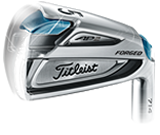 It seems to me that the Titleist designers who work on the AP line of irons subscribe to the theory that if it ain’t broke, don’t fix it. The AP2 irons have been extremely popular irons for Titleist since their release in 2010. Although the design has not changed dramatically the designers at Titleist still find ways to improve upon these very popular irons.
It seems to me that the Titleist designers who work on the AP line of irons subscribe to the theory that if it ain’t broke, don’t fix it. The AP2 irons have been extremely popular irons for Titleist since their release in 2010. Although the design has not changed dramatically the designers at Titleist still find ways to improve upon these very popular irons.
The 2014 version of the AP2, the 714, had already won a major before they were made available to all of us regular golfers. Jason Dufner had them in the bag during his win at Oak Hill in the PGA Championship last September. There are a number of other professionals who have put them in the bag as well. They are and have been very popular with the touring pros all the way to mid-handicap golfers.
My first thought when I saw the irons was to ask what is different from these irons versus the model they released in 2012 (the 712)? The differences are subtle but according to Titleist they will help golfers of all skill levels. I took the 714 AP2s for a spin and got an up-close and personal chance to see how they play. With that lets take a look at my thoughts.
Technology
What sets the AP2s apart from other players clubs is the capability of the club designers to move weight around the clubhead and still keep the blade like look at address. By playing with the center of gravity of the clubhead it gives designers freedom to adjust each iron individually to perform to the exacting standards of the touring professional and the everyday golfer.
The first difference the golfer will notice with the newest version of the AP2 irons is the longer flight of the irons along with trajectory control. Titleist tells us that the golfer will get more carry distance from higher launching irons, particularly the long irons. All of the irons have a low center of gravity combined with a thicker face to give the golfer more control. I found it a bit unique that Titleist would claim that the face was thicker. This seems to be in contrast to some of the other golf companies attempting to increase the COR of even the irons. I think this speaks to Titleist’s commitment to better golfers because they are not trying to make the longest irons ever hit, but the ones the give the golfer the best control and feedback that better golfers crave.
Behind the cover that is on the back of the irons, Titleist employs the use of Tungsten weighting. This is done to put the weight exactly where the designer wants it to be to improve the MOI. With this targeted weight from the high density tungsten the AP2s give the golfer a more consistent speed on mishits helping to provide better distance control. This improves the playability to golfers of all skill levels. Also by moving the center of gravity around within the set Titleist can give the golfer a more solid feel for each club. They have moved the CG lower in the longer irons to help with launch conditions and feel.
With the AP2s even the sole of the club has technology added to it. Titleist calls it “Crisp Turf Release” which comes from the cambered sole with pre-worn leading edge and beveled trailing edge. All of this is done in order to help the golfer not dig too deeply into the turf. Titleist uses progressive sole widths and face thickness to give the irons a tour proven profile.
Another piece of technology that is quite amazing about these irons is that they are forged, a multi-material forging to give the player feedback, workability, as well as forgiveness. You wouldn’t think by looking at them that they were forged because of the dual cavity design that Titleist uses.
Esthetics
When I first pulled these clubs from the box my impression is that they are really a good looking iron. They are flashier than one might expect better players to have in their bag, even flashier than the initial version of the AP2s (the 710 design). I will say that I am very partial to the 710 design as I feel Titleist tried to marry the traditional look with the dual cavity design into the original irons. Titleist designers are now moving to what I would call a flashier design in the 714 model irons that I tested. Still they have a very comforting feeling in how they look both in the bag.
The back of the irons don’t look dramatically different than the 712 AP2 irons. Titleist has stuck with the dual cavity design as well as the same color scheme for the AP2s. In the 712 design Titleist went for more what I would call a tri-cavity design with the third cavity being the small hole in the bottom metal cavity. The biggest difference you will notice is the Titleist badge. In the original 710 model Titleist went for more of a Venetian blind look and mostly carried that forward to the 712 models but angled the lines more vertically. In the 714 model, Titleist designers have gone for more a true badge which can be noticeably felt when running your hand along the back of the club. The badge is very bright silver and the Titleist logo has very faint lines of grey running vertically and horizontally inside the smaller badge. The rest of the upper cavity is done in black in order to accent the new Titleist badge.
The designers have stayed with the brushed satin and polished steel as in the previous versions as well as an understated amount of offset in the design of the neck of the club. The topline is still larger than usual for better players clubs that the AP2s are targeted for, but not nearly as large as some of the other clubs out there. The larger topline helps to hide the lower half of the dual cavity but in the three and four iron I was still able to notice the bulge of the second beyond the top line. This is becoming more of a standard practice particularly for irons in this category.
The understated look is continued up into the ferrel of the club which is black and very traditional to the shaft and very recognizable black Tour Velvet Titleist grips that come on all their clubs. The club designer wanted other golfers to recognize that you have AP2s in your bag but not make you think the irons belong in a NASCAR race.
Playability and Feel
Before writing this review I had only hit the original AP2s, from ’08, and it was only on the range before playing a round. I had been impressed from that session, they were solid, and gave a decent amount of feedback to me. I would have described them as balanced, meaning a nice balance between feel and forgiveness. My friend who used them still has them in his bag so I was able to make some nice comparisons. The 714’s that I hit for this review were exactly the same sort of feeling that I got from my first experience. The difference was in the trajectory control. I found that the 714’s have a slightly higher trajectory than the 710’s. Both clubs have the same shaft, but the weighting seems designed to hit the ball higher with the 714’s. Not what I would describe as a ballooning ball flight but slightly higher. For me, primarily a low ball hitter this change is welcomed because it helps to stop the ball on the greens faster than with my regular irons. I play very hard greens so the best way to stop the ball is a high shot that has a more vertical angle of decent.
Other than this change in trajectory there was not a ton of difference in the original model and the model being sold today. Maybe a hair more forgiving on mishits but both models do exceptionally well in the forgiveness category for players irons such as these irons are. It is a real challenge to find irons that are forgiving and also provide enough feedback to be used by better golfers. The 714 model irons perform extremely well in both categories.
I think for a low ball hitter such as myself I may better off with KBS irons rather than the stock S300 shafts that are put into these irons. The KBS shafts offer a slightly higher ball flight than the S300, and even though the 714 create a higher ball flight than its predecessors, it still could do with a slightly higher flight. I understand the logic that Titleist used by going with the S300 irons because I think better players will prefer the lower flight that those shafts provide. If you are like me and hit the ball low I think you will be happier with the KBS irons rather than the standard S300s.
The feel I would describe as one tick below the blades that I typically use in terms of how solid a very well struck shot feels. The AP2s are still very solid and the sweetspot or better described as the area where the ball feels very solid is larger than with the muscle back irons I typically play. Toe hits are obvious for me to know where the ball was hit as well as heel hits, and both fall off line at about the same distance short of the target. I would say toe hits are slight more distance loss but it is not much. I like for the irons to miss the green when I mishit so that I train myself to hit the sweetspot more often and these irons put me close to the green but rarely on which is about the perfect type of feedback that a once a week golfer like me wants to see.
In terms of length, they are slightly shorter than the irons I normally play. I was not surprised by this because the trajectory of the iron is so much higher the ball sits where it lands meaning that the longer irons fly shorter distances because they have less roll out. I do not consider this distance loss a bad thing because long irons that stop where they land is a bonus for a low hitter such as myself.
Conclusion
Titleist continues to put out very solid players irons with the introduction of 2014 version the AP2 irons. The irons maintain the balance of forgiveness and feedback that all golfers want to have in their game. Titleist designers also stayed with the relatively safe color scheme of blacks and greys but still have some graphic affects as many of the AP2 irons offered.
I am not certain if I owned a set of 710 or 712 models of the AP2 that I would rush out to buy the 714 models, unless I was looking for a bit more height out of my longer irons shots. I feel the 714 models offer a slightly higher ball flight in the longer irons which more of us mid-handicap golfers would prefer. It may also be that many of you who owned past AP2 models are now looking for an upgrade and I would strongly recommend the 714 model to those golfers.
The 714 AP2 irons from Titleist are what we have come to expect from Titleist; very solid players clubs. If you are the lookout for high performing irons I would strongly suggest you give these irons a try.

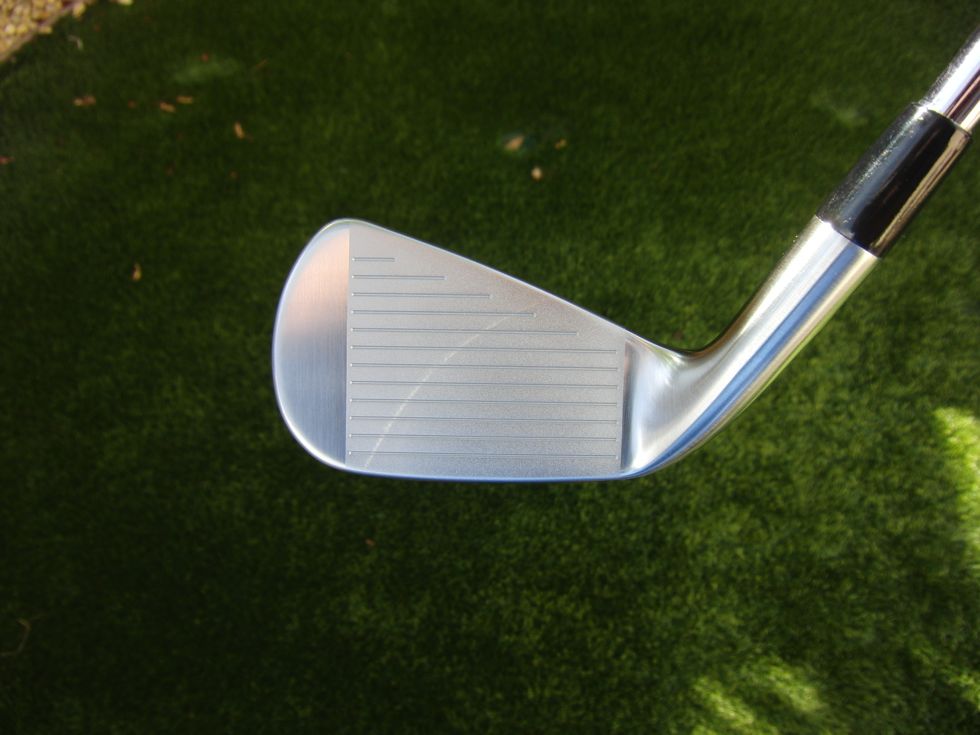
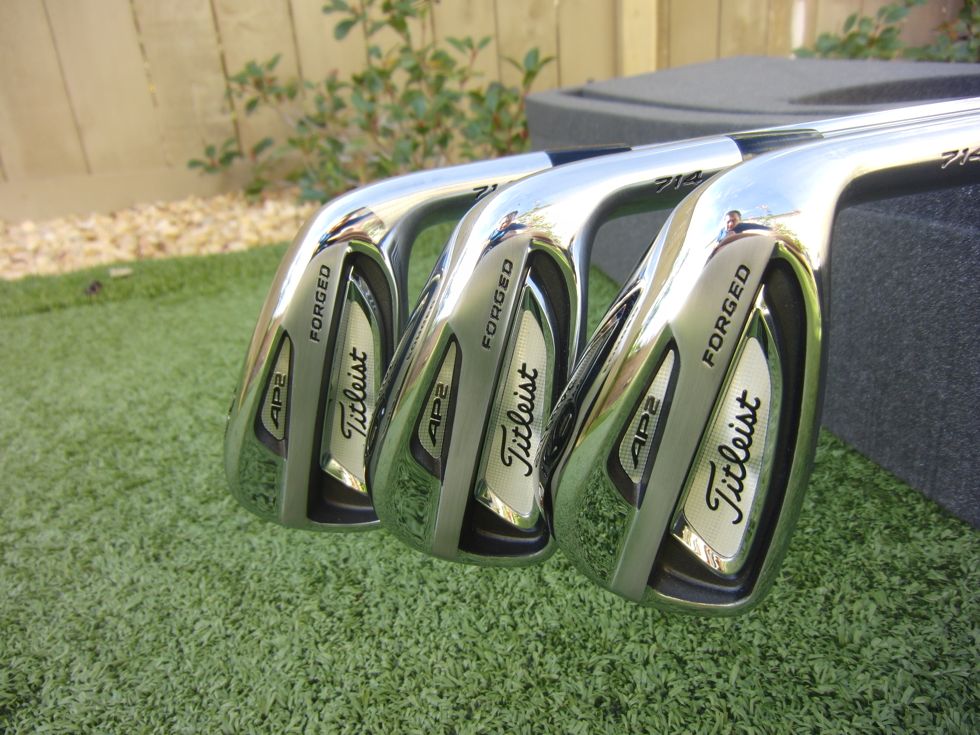
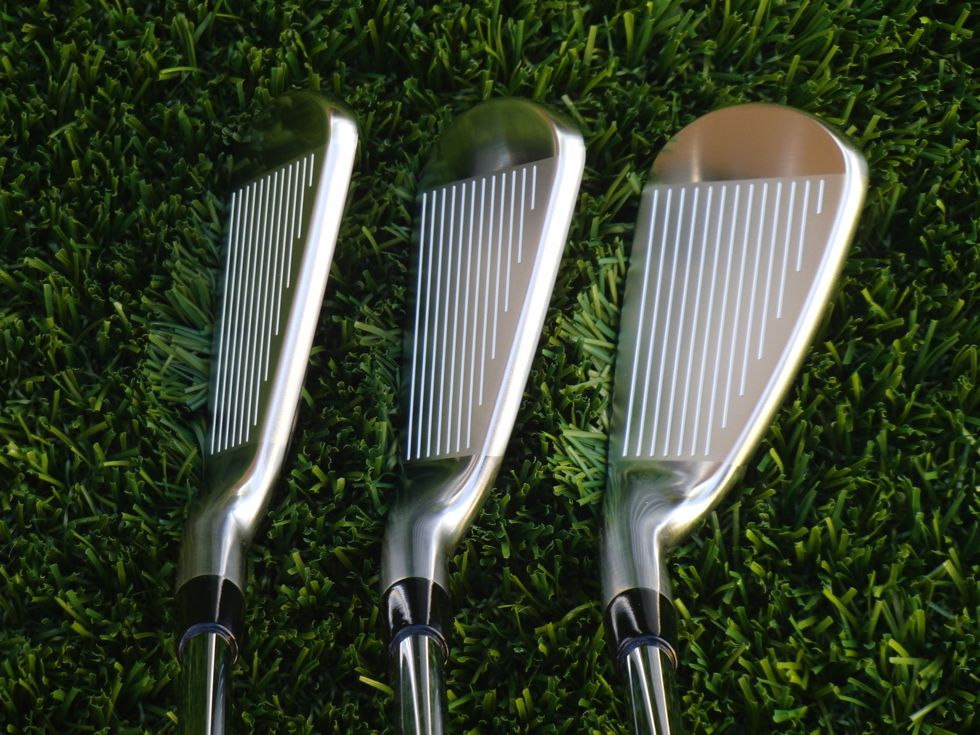
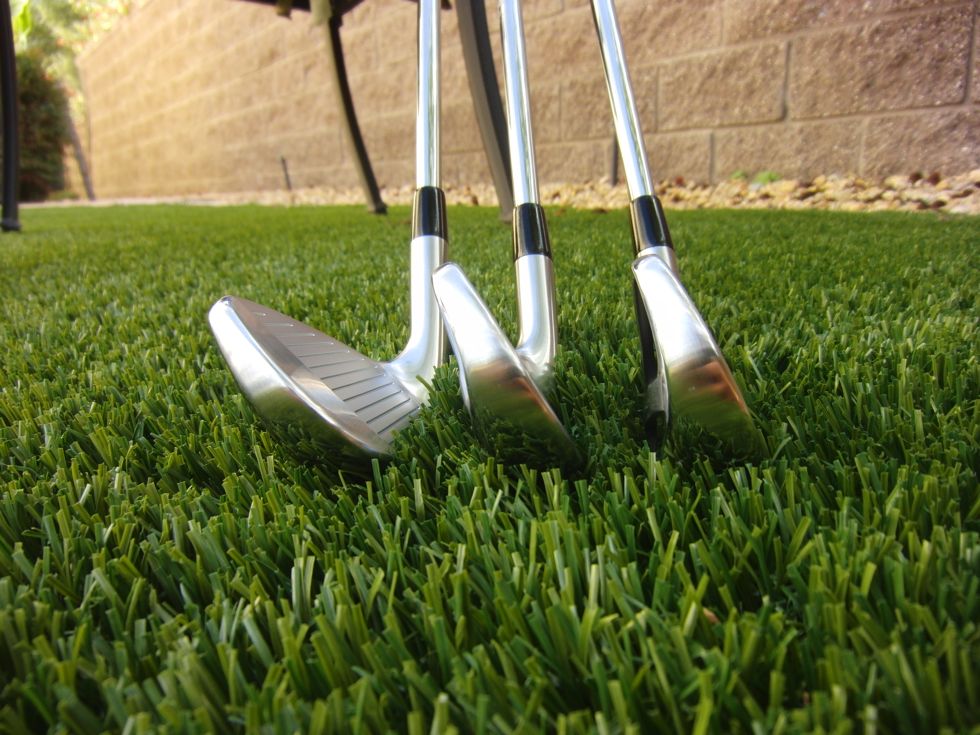
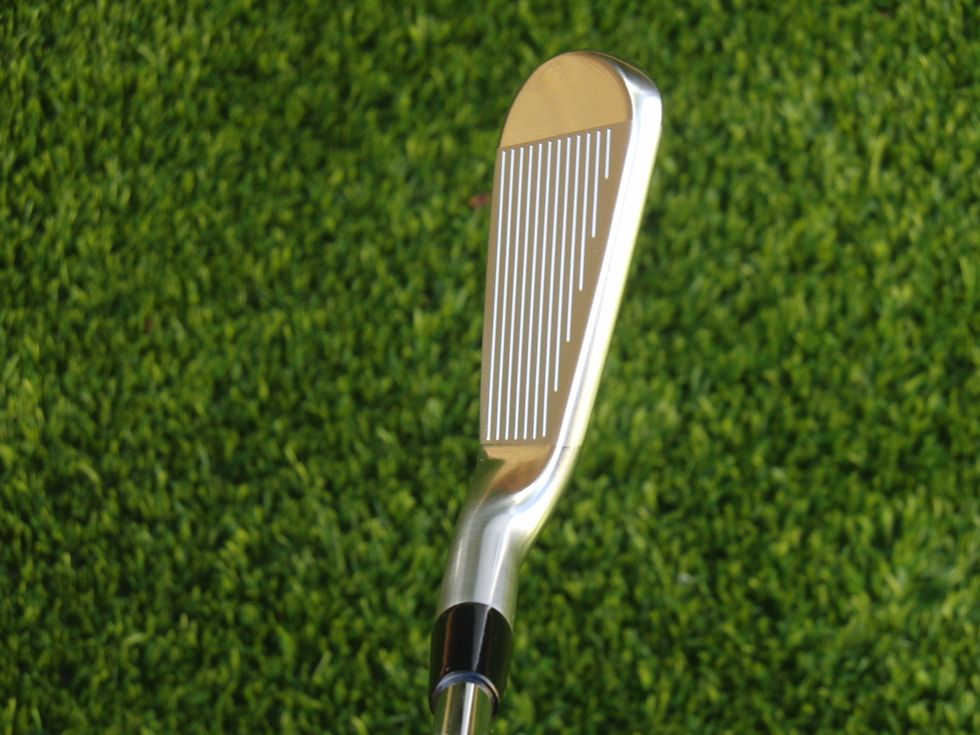
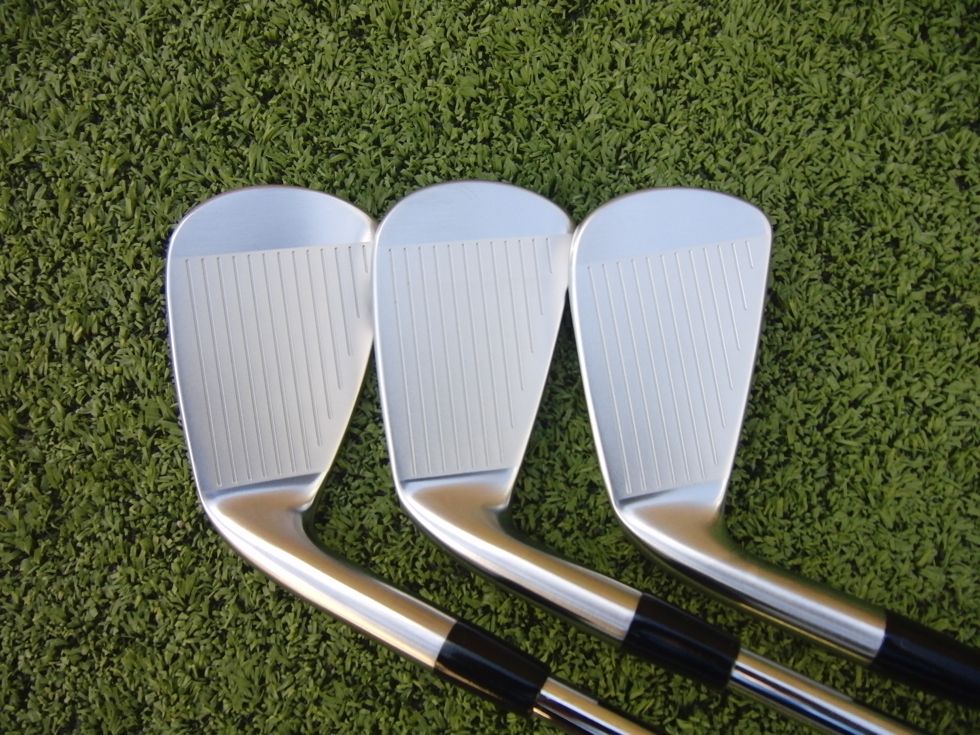
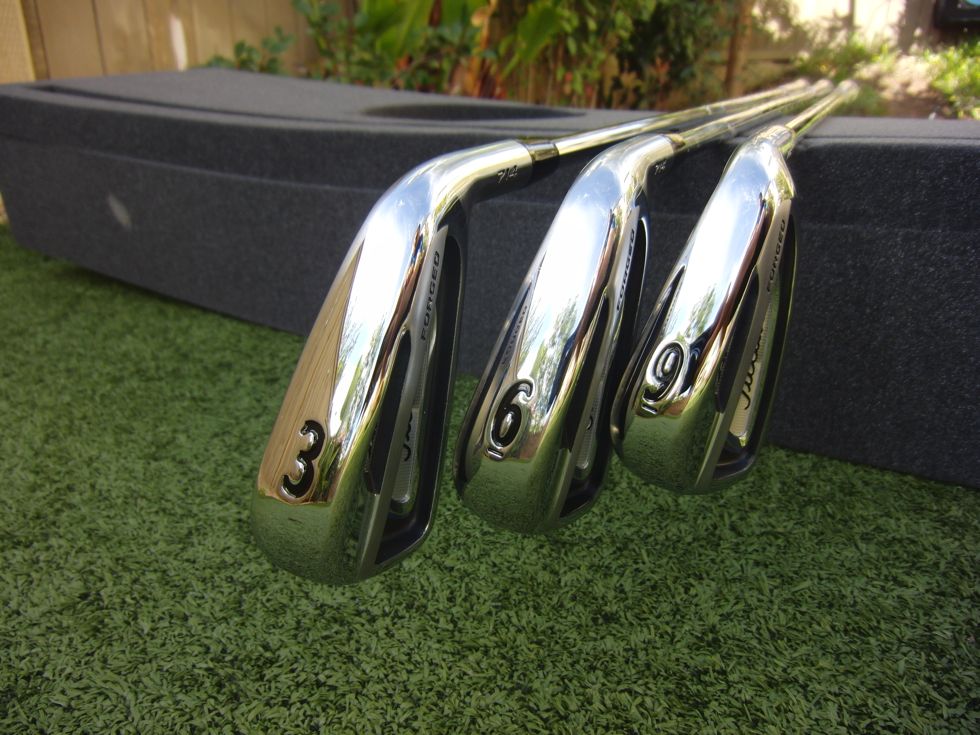
It was brought to my attention, by a source more knowledgeable than me, that I have been incorrectly referring to the 710 model as the first in the AP2 line. They originally released a version of the AP2 in 2008 and then the first update was the 710 version in 2010. Sorry for the mistake.
Appreciate the review. I recently did a club fitting and narrowed it down to the 714 AP2’s and the Mizuno MP-64’s. Ultimately I chose the 64’s but it was close and I really liked both clubs. “Balanced” is the perfect way to describe the blend of feel and forgiveness you get from the AP2’s.
My only complaint was that on shots struck perfectly, I felt that the feel was a little too soft if that’s possible. I know that’s a strange complaint, but I just didn’t get the feeling that the ball really launched hard off of the face. It seemed as if some of the “springiness” was gone. My distances didn’t reflect that as I was getting good carry distance, but it was just an odd feeling. Maybe I would get used to it, but I noticed it a few different times during the fitting. Shots that were just milimeters off of the dead center of the face felt great, but if I really center punched one it seemed exceptionally soft.
Curious to know if you noticed this at all? Contrary to popular belief, I felt that the AP2’s were actually a softer feel than the Mizuno’s on those particular shots.
For me personally, the 714 AP2 irons are a half club longer than previous AP2 models I’ve hit.
When choosing new irons I narrowed it down to the AP2 and the PING S55. I agree that the AP2 didn’t have the feel i was looking for. It’s hard to explain but solid struck shots with the AP2 felt too flush or soft and didn’t feel like I had the distance control, although there was little dispersion. It felt like I was hitting a player improvement iron. I liked how the S55 felt like I was actually hitting a ball with distance control.